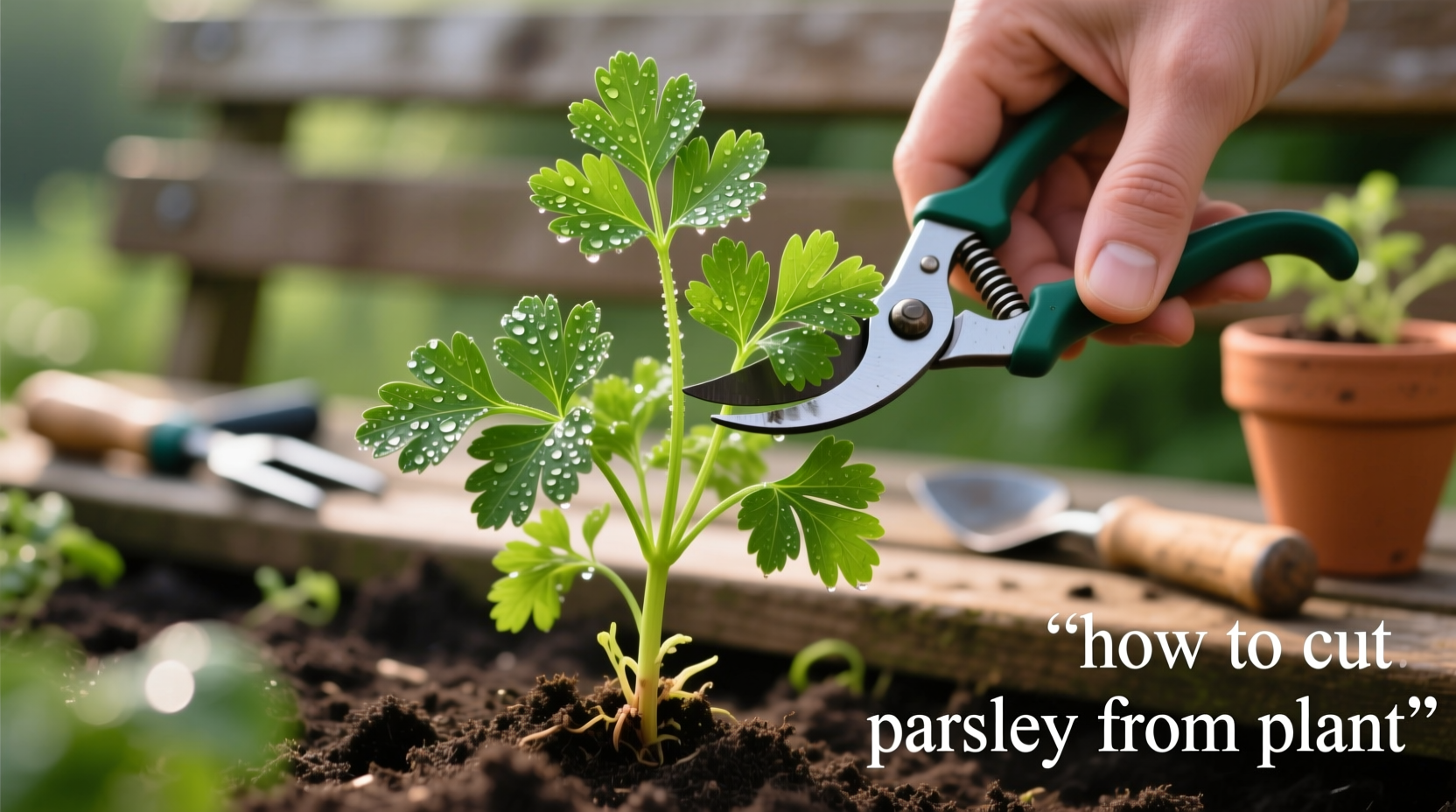Nothing beats the vibrant flavor of freshly harvested parsley in your dishes. Whether you're growing flat-leaf Italian or curly parsley on your windowsill or in your garden, knowing the proper harvesting technique makes all the difference between a thriving plant that keeps producing and one that withers prematurely. This guide reveals the exact method professional gardeners use to maximize yield while keeping parsley plants healthy for months.
Why Proper Parsley Harvesting Matters
Many home gardeners unknowingly damage their parsley plants through improper harvesting techniques. Cutting too much at once or harvesting from the wrong parts of the plant can stunt growth or even kill your plant. According to research from the University of California Cooperative Extension, plants harvested using proper techniques produce up to 40% more foliage over a growing season compared to those harvested incorrectly. The key is understanding parsley's growth pattern—it grows from the center outward, so harvesting the outer stems first encourages new growth from the center.
Essential Tools for Harvesting Parsley
You don't need specialized equipment, but having the right tools makes the process cleaner and more efficient:
- Sharp scissors or pruning shears (dull tools crush stems)
- Clean gardening gloves (optional but recommended)
- A small basket or container for harvested stems
- Water spray bottle (for immediate post-harvest misting)
Always sanitize your cutting tools before harvesting to prevent disease transmission between plants. The Royal Horticultural Society recommends wiping blades with a 10% bleach solution or rubbing alcohol before use.

Step-by-Step Harvesting Process
Follow these steps for optimal results every time you harvest parsley:
Step 1: Identify Mature Outer Stems
Look for stems that have reached 6-8 inches in length with multiple sets of leaves. Focus on the outer stems first, as these are the most mature. Avoid harvesting from the center of the plant, which contains the newest growth.
Step 2: Locate the Right Cutting Point
Find a point 1-2 inches above the soil line where multiple leaf clusters meet the main stem. This is typically just above a leaf node—the small bump where leaves emerge from the stem. Cutting here stimulates new growth from that node.
Step 3: Make a Clean, Angled Cut
Position your scissors at a 45-degree angle and make a swift, clean cut. The angled cut helps water run off the stem rather than collecting and causing rot. Never tear or pull stems, as this damages the plant's vascular system.
Step 4: Limit Your Harvest
Never remove more than one-third of the plant at any single harvesting session. The University of Maryland Extension emphasizes that exceeding this limit stresses the plant and reduces its ability to photosynthesize effectively. For container plants, be even more conservative—limit harvests to one-quarter of the plant.
Optimal Harvesting Timing Guide
| Factor | Best Practice | Why It Matters |
|---|---|---|
| Time of Day | Early morning | Essential oils are most concentrated; stems are hydrated |
| Frequency | Every 2-3 weeks | Allows sufficient regrowth between harvests |
| Plant Age | Wait until 10-12 weeks old | Ensures established root system before first harvest |
| Weather Conditions | Avoid extreme heat or drought | Plants are more vulnerable to stress during these periods |
Post-Harvest Plant Care
What you do after harvesting determines how quickly your parsley will regenerate:
- Water immediately: Give plants a thorough watering after harvesting to reduce stress
- Fertilize lightly: Apply a balanced liquid fertilizer at half-strength two days after harvesting
- Monitor for pests: Harvesting creates entry points for pests; inspect plants daily for the first week
- Remove damaged leaves: Trim any yellowing or damaged leaves to direct energy to new growth
Common Harvesting Mistakes to Avoid
Even experienced gardeners sometimes make these critical errors:
- Harvesting from the center: This removes the plant's growth point, stunting future production
- Using dull tools: Crushes stems rather than making clean cuts, inviting disease
- Harvesting during hot afternoons: Plants are dehydrated, making them more vulnerable
- Taking more than one-third: Over-harvesting stresses the plant beyond recovery
- Harvesting wet plants: Increases risk of fungal diseases spreading through cuts
According to Cornell University's gardening resources, parsley plants harvested during periods of extreme heat (above 85°F/29°C) show significantly reduced regrowth rates. During heat waves, limit harvesting to early morning when temperatures are cooler, and consider providing temporary shade for your plants.
Storing Your Fresh Parsley
Proper storage maintains flavor and texture for up to two weeks:
- Rinse harvested stems gently in cool water
- Pat dry with clean paper towels (moisture causes spoilage)
- Trim bottom 1/2 inch of stems
- Place in a glass with 1 inch of water (like a bouquet)
- Cover loosely with a plastic bag
- Store in refrigerator (not the coldest part)
For longer storage, freeze parsley by chopping and placing in ice cube trays with water or olive oil. This method preserves flavor better than drying for most culinary applications.
Seasonal Harvesting Considerations
Parsley harvesting needs change throughout the growing season:
- Spring: Harvest less frequently to allow plants to establish strong root systems
- Summer: Harvest early morning during heat waves; increase watering after harvest
- Fall: Take advantage of cooler temperatures for more frequent harvesting
- Winter (in mild climates): Harvest sparingly; focus on preserving plant health
Understanding these seasonal variations helps you adjust your harvesting technique for optimal results year-round. Remember that parsley is a biennial plant—most productive in its first year—and proper harvesting extends its productive life significantly.











 浙公网安备
33010002000092号
浙公网安备
33010002000092号 浙B2-20120091-4
浙B2-20120091-4